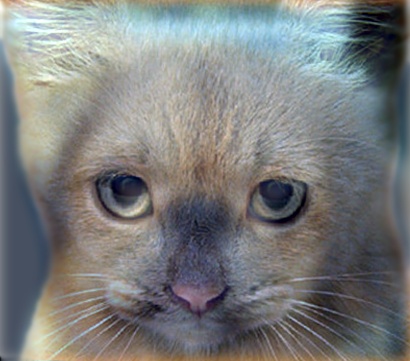Project 2: Image Filtering and Hybrid Images

(Look at image on right from very close, then from far away.)
Brief
- Due: 11:59pm on Sunday, Feb 22th, 2014
- Html writeup template: template.html
- Project materials are also available in proj2.zip .
Homework1 Hand out
Due: Feb 2, Monday.

The goal of this assignment is to write an image filtering function and use it to create hybrid images using a simplified version of the SIGGRAPH 2006 paper by Oliva, Torralba, and Schyns. Hybrid images are static images that change in interpretation as a function of the viewing distance. The basic idea is that high frequency tends to dominate perception when it is available, but, at a distance, only the low frequency (smooth) part of the signal can be seen. By blending the high frequency portion of one image with the low-frequency portion of another, you get a hybrid image that leads to different interpretations at different distances.
This project is intended to familiarize you with Numpy and image filtering. Once you have created an image filtering function, it is relatively straightforward to construct hybrid images. If you don’t know Numpy, you might find the online tutorials on Numpy useful.
Image Filtering. Image filtering (or convolution) is a fundamental image processing tool. See chapter 3.2 of Szeliski and the lecture materials to learn about image filtering (specifically linear filtering). Python/Numpy/Scipy have numerous built in and efficient functions to perform image filtering, but you will be writing YOUR OWN such function from scratch for this assignment. More specifically, you will implement my_imfilter() which imitates the default behavior of the build in scipy.ndimage.filter module and the MATLAB imfilter.m function. As specified in my_imfilter.py, your filtering algorithm must (1) support grayscale and color images (2) support arbitrary shaped filters, as long as both dimensions are odd (e.g.7x9 filters but not 4x5 filters) (3) pad the input image with zeros or reflected image content and (4) return a filtered image which is the same resolution as the input image.
Hybrid Images. A hybrid image is the sum of a low-pass filtered version of the one image and a high-pass filtered version of a second image (Hint: how do you get a high pass image? Remember unsharp mask?). There is a free parameter, which can be tuned for each image pair, which controls how much high frequency to remove from the first image and how much low frequency to leave in the second image. This is called the "cutoff-frequency". In the paper it is suggested to use two cutoff frequencies (one tuned for each image) and you are free to try that, as well. In the starter code, the cutoff frequency is controlled by changing the standard deviation of the Gausian filter used in constructing the hybrid images. Plot the frequency cut off for both images.
We provide you with five pairs of aligned image, which can be merged reasonably well into hybrid images. The alignment is important because it affects the perceptual grouping (read the paper for details). We encourage you to create additional examples (e.g. change of expression, morph between different objects, change over time, etc.).
For this project,you must do a project report in HTML. We provide you with a placeholder .html document which you can edit. In the report you will describe your algorithm and any decisions you made to write your algorithm a particular way. Then you will show and discuss the results of your algorithm. In the case of this project, show the results of your filtering algorithm (the test script saves such images already) and show some of the intermediate images in the hybrid image pipeline (e.g. the low and high frequency images, which the starter code already saves for you). Also, discuss anything extra you did. Feel free to add any other information you feel is relevant.
my_imfilter.py